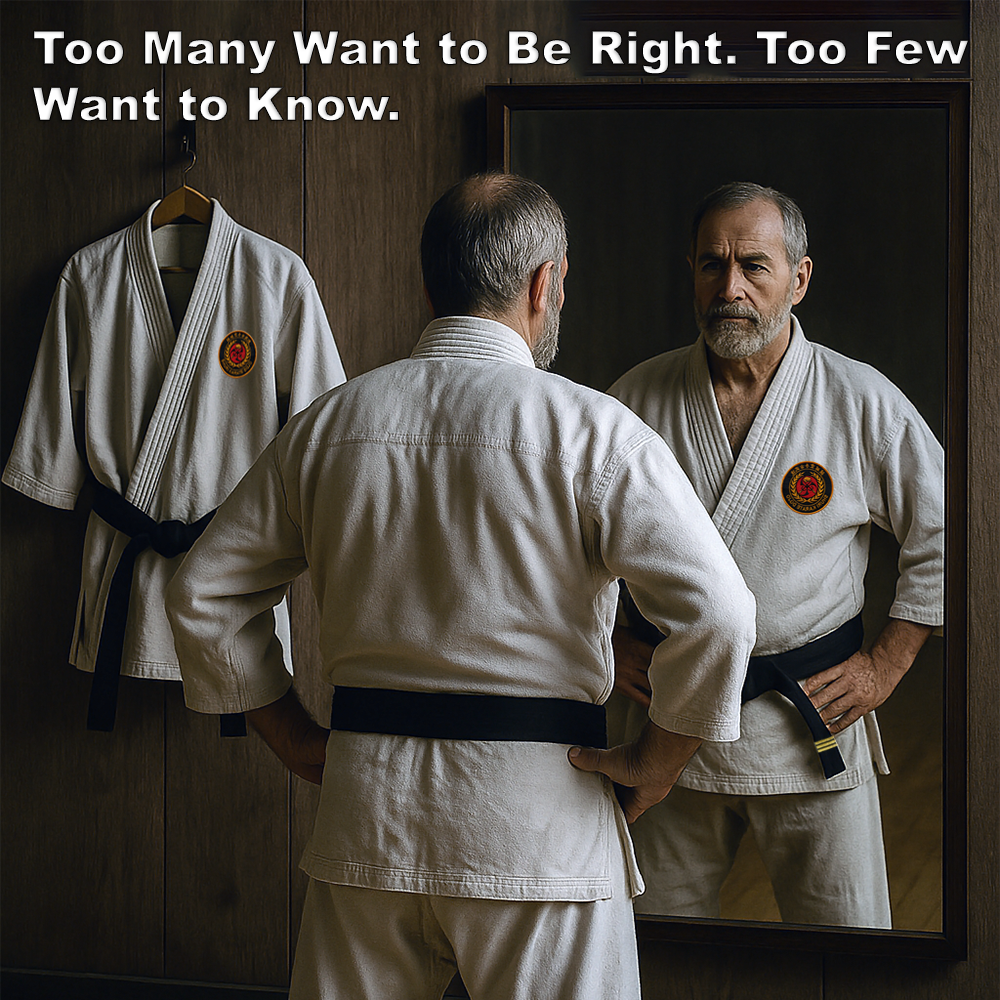
(Approx 2 minute 45 second read)
I wrote recently that no matter how much evidence you provide, people still will not see past their sometimes preconceived rhetoric.
.
You know, real martial artists are okay with it when they find out they are wrong. And to me, that is one of the greatest gifts that an open mind can bring. There are too many people in this world who want to be right – and too few who want to know.
.
For decades, many martial artists, have quietly asked themselves the same question: why doesn’t much of what we were taught actually work for self-defense?
.
Even back in the early 1980s, I remember feeling something wasn’t quite adding up – though like many, I pushed those doubts aside for a long time. Perhaps that question gets asked more often now, or perhaps it’s just more visible.
.
The shift away from self-protection wasn’t just gradual evolution – it was, in many ways, a sharp departure. When karate left Okinawa and was adapted for new purposes elsewhere, much of its original intent was left behind. The emphasis moved from civilian survival to discipline, conformity, and eventually sport – and that change has had lasting consequences.
.
I know I write about this a lot, and perhaps some of you are bored with it, but for me (and a couple of others), we find the dilution of karate from self-defense… well, just a real shame.
.
Of course, you can practice for whatever reason you want, and for most of us, this isn’t the point. The point is when people defend their practice – but that practice doesn’t hold up to scrutiny, to science, or to the obvious, common-sense questions that should be asked of it.
.
Someone said to me recently that I should just ignore the rhetoric. I could. And most of the time, I do. But I enjoy writing. I enjoy allowing others out there to see my opinions and views – so that hopefully, some of you may question things too.
.
Now I teach and write from a self-protection perspective – you may have guessed that. Why? It isn’t just about theory to me. Years of seeing real violence – both in professional contexts and within martial arts circles – have shaped how I think about self-protection.
.
And if you truly believe that most of the karate taught today is preparing you for self-defense… come on. Really. You truly believe that?
.
I didn’t always think this way. Like many, I used to defend techniques and ideas simply because that’s what I was taught – because they had been handed down by people I respected. But time, pressure, and real experience don’t care about tradition. They strip away what doesn’t hold up. And what’s left… well, that’s what I’m interested in now.
.
I’m not writing this to tear anything down. I’m writing it because I still care. About karate. About truth. And about the people who, like I once did, sense that something doesn’t quite add up.
.
Some people won’t question it. They’ll continue on, content with what they’ve always done, and maybe even be offended that anyone would dare ask the hard questions. And that’s their right. But I often wonder – are they truly satisfied practicing something that was once intended for real-world violence, but has since become something else entirely?
.
Maybe it’s comfort. Maybe it’s nostalgia. Maybe it’s the fear of realizing that what they’ve spent years perfecting might not hold up under pressure. I don’t know. But I do know this: karate as it was shaped in the mid-20th century – especially after it left Okinawa – needs to be challenged. Not to dismiss it, but to clarify it. To be honest about what it is, and more importantly, what it is not.
.
Because when people keep calling something “self-defense” when it clearly isn’t… that’s not just misguided. It’s misleading. And if we really care about the art – and about the people who put their trust in it – then surely it’s time to stop avoiding these conversations.
.
Anyway, maybe I’ve said enough. Maybe I should stop writing about it now. But then again… probably not.
.
.
Written by Adam Carter
